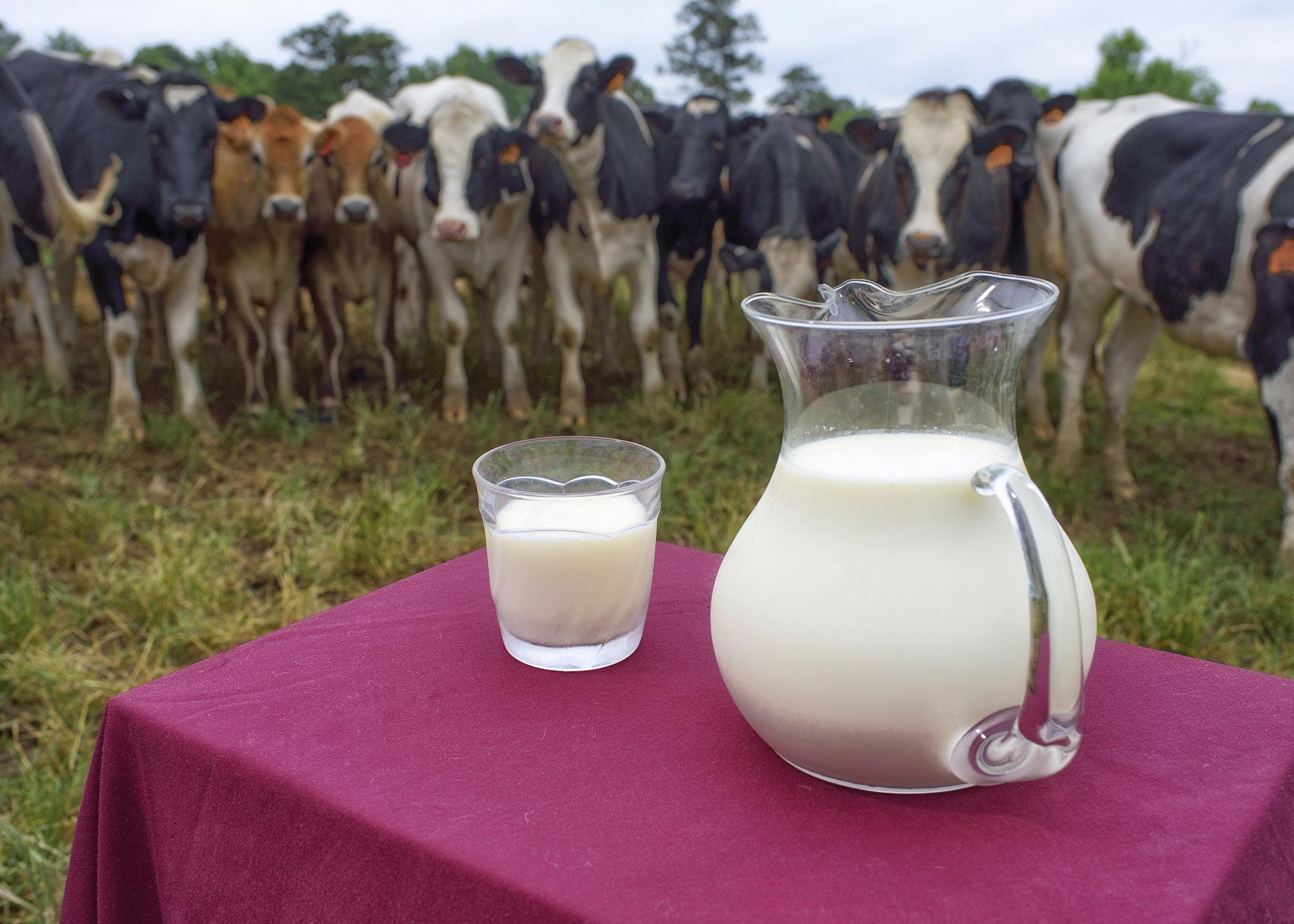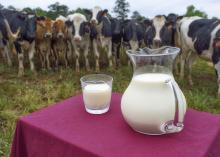Information Possibly Outdated
The information presented on this page was originally released on May 29, 2015. It may not be outdated, but please search our site for more current information. If you plan to quote or reference this information in a publication, please check with the Extension specialist or author before proceeding.
Milk provides great taste, good health benefits
STARKVILLE, Miss. -- Drinking a beverage that tastes delicious and has good nutritional value is like having your cake and eating it, too.
Brent Fountain, associate professor of food science, nutrition and health promotion with the Mississippi State University Extension Service, said milk is a good source of protein. Protein provides the nutrients the body needs to build and repair bones, muscles, cartilage, skin and blood. Milk is also a good carbohydrate source, providing the body with energy. Calcium and vitamin D are also important nutrients found in milk.
“Dairy products, including milk, have been linked to improved bone health and may reduce the risk of osteoporosis as we age,” Fountain said. “Dairy products also have been associated with a reduced risk of cardiovascular disease, type 2 diabetes and lower blood pressure, due to milk’s potassium content.”
What about people who are lactose intolerant or choose a vegan diet? Fortunately, there are alternatives for individuals who cannot or do not use dairy products.
The primary reason for not consuming dairy products is an allergy to the protein found in milk or an intolerance to the lactose. Lactaid is one of the products provided to some people who lack the lactase enzyme to help with digestion.
“For others, goat’s milk is an alternative. Goat’s milk has a similar nutritional profile to cow’s milk,” Fountain said. “Others choose not to drink dairy products for personal reasons. Nondairy milk can be made from soy, coconut, almonds or cashews.”
For the more health-conscious individuals, there are certain things to look for when purchasing milk. The first is fat content, and the second is added sugar.
“By consuming skim milk, the calories reduce to 80 with zero grams of fat. Other forms of dairy, such as ice cream, yogurt and cheeses, can be selected as low-fat varieties,” Fountain said. “Products with added sugars, such as flavored milk, yogurt and ice cream, can add unneeded calories to the diet and should be used sparingly.”
The concentration of butterfat has been known to improve the taste of milk for many people.
Stephanie Ward, assistant professor at the MSU Department of Animal and Dairy Science, said some cattle feeds can help increase the butterfat content.
“The forage-to-grain ratio in the ration can affect the concentration of butterfat, which will impact the taste, creaminess and consistency of the milk,” she said. “For the most part, however, milk is a very consistent product. When you consider that milk is the mother’s way of providing nutrition to her young, it makes sense that her body will regulate the consistency and safety of the product.”
Ward said some dairy products now have more sugar added to improve the taste. These beverages are made from items like soybeans and almonds, which are not biologically milk.
One of the most popular real dairy products is chocolate milk.
“The addition of chocolate flavoring improves the taste of milk for most people, and it was also shown to be an excellent source of nutrition for athletes recovering from intense activities,” Ward said. “Additionally, many beverage companies are currently developing products that are milk based but have even more added protein to target the health-conscious market.”
Mississippi has 95 grade A dairy herds. As of 2014, there were 13,000 milk cows in Mississippi. The state’s value of milk production in 2014 was $45 million.




